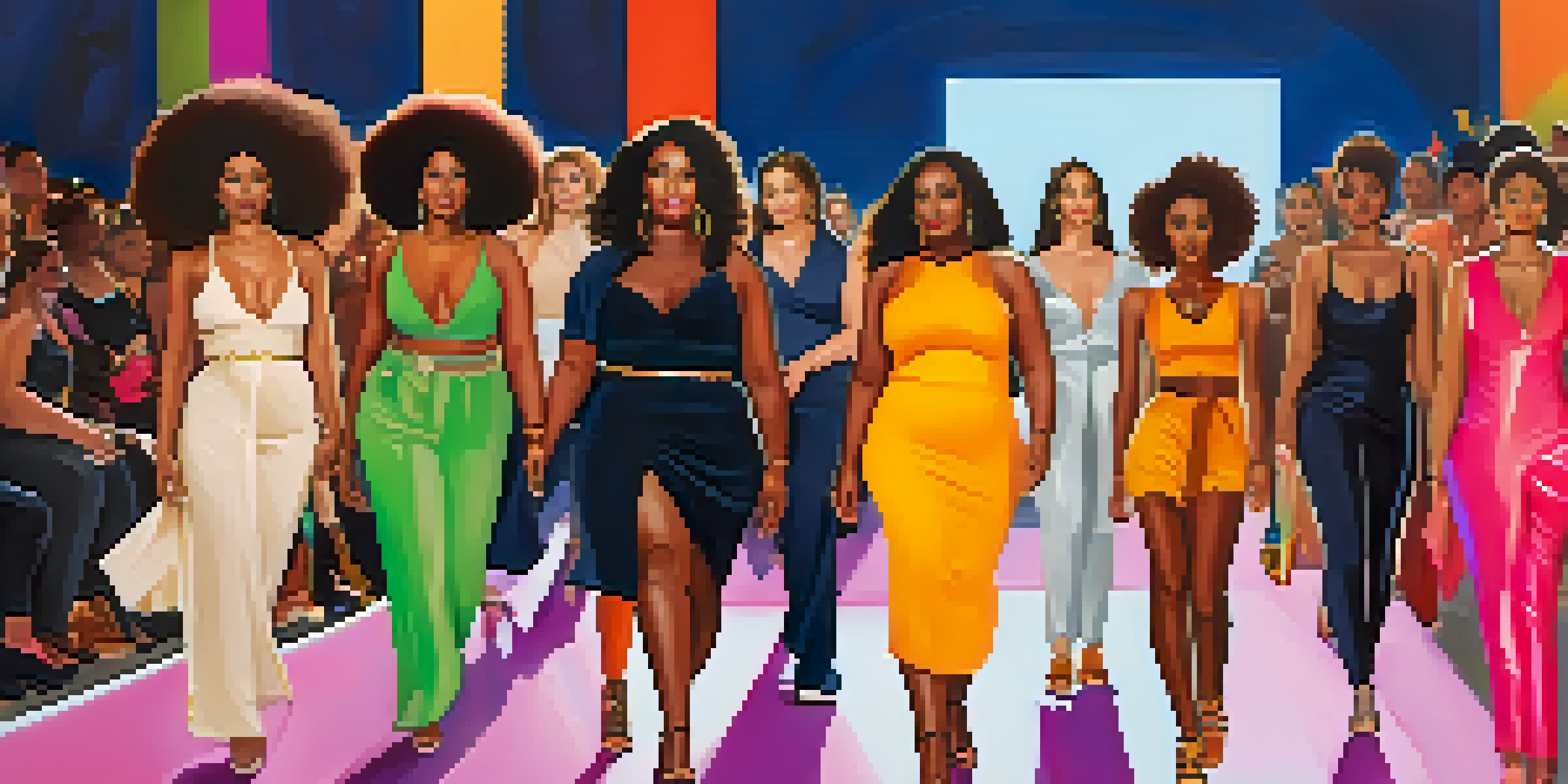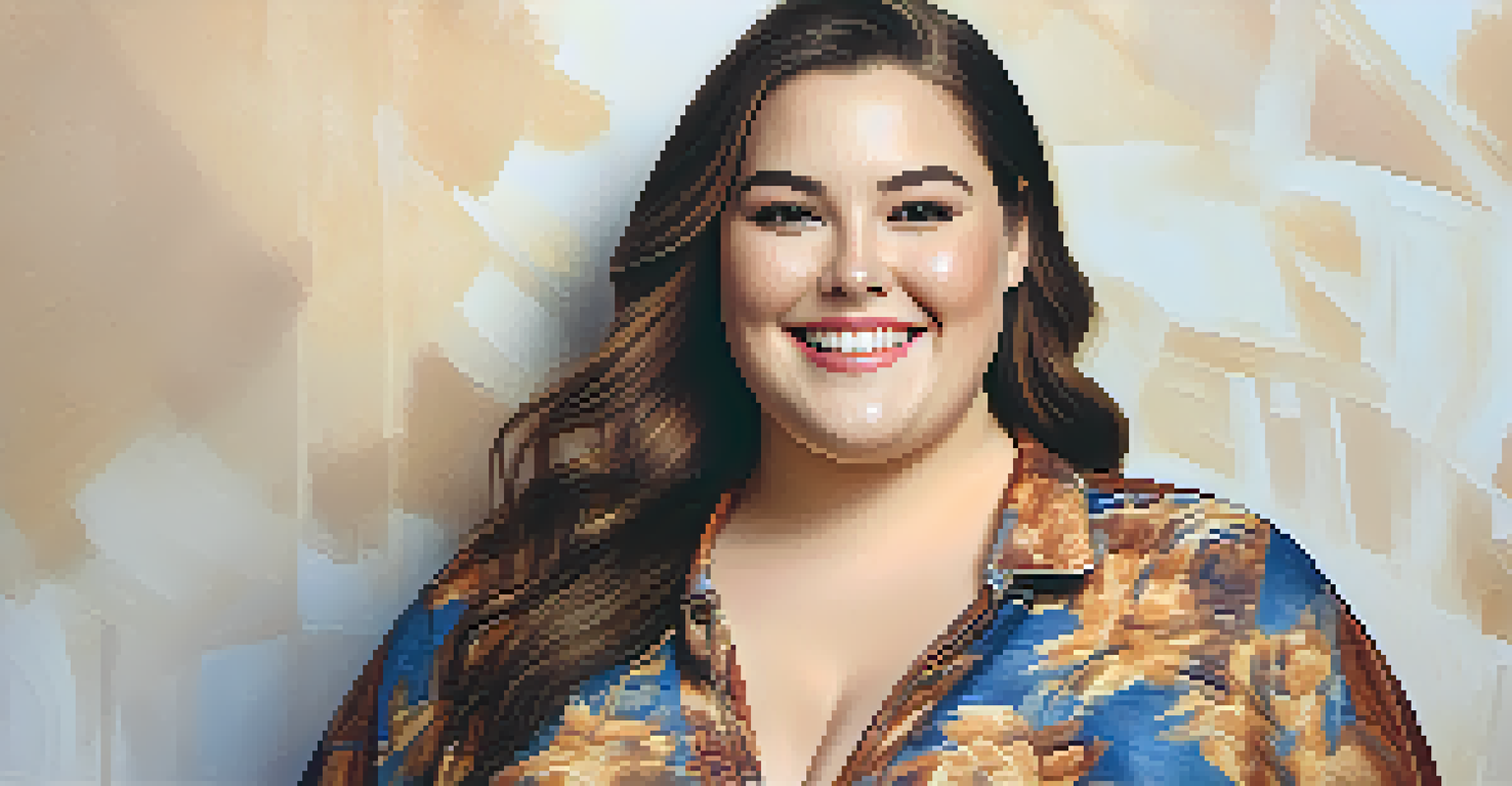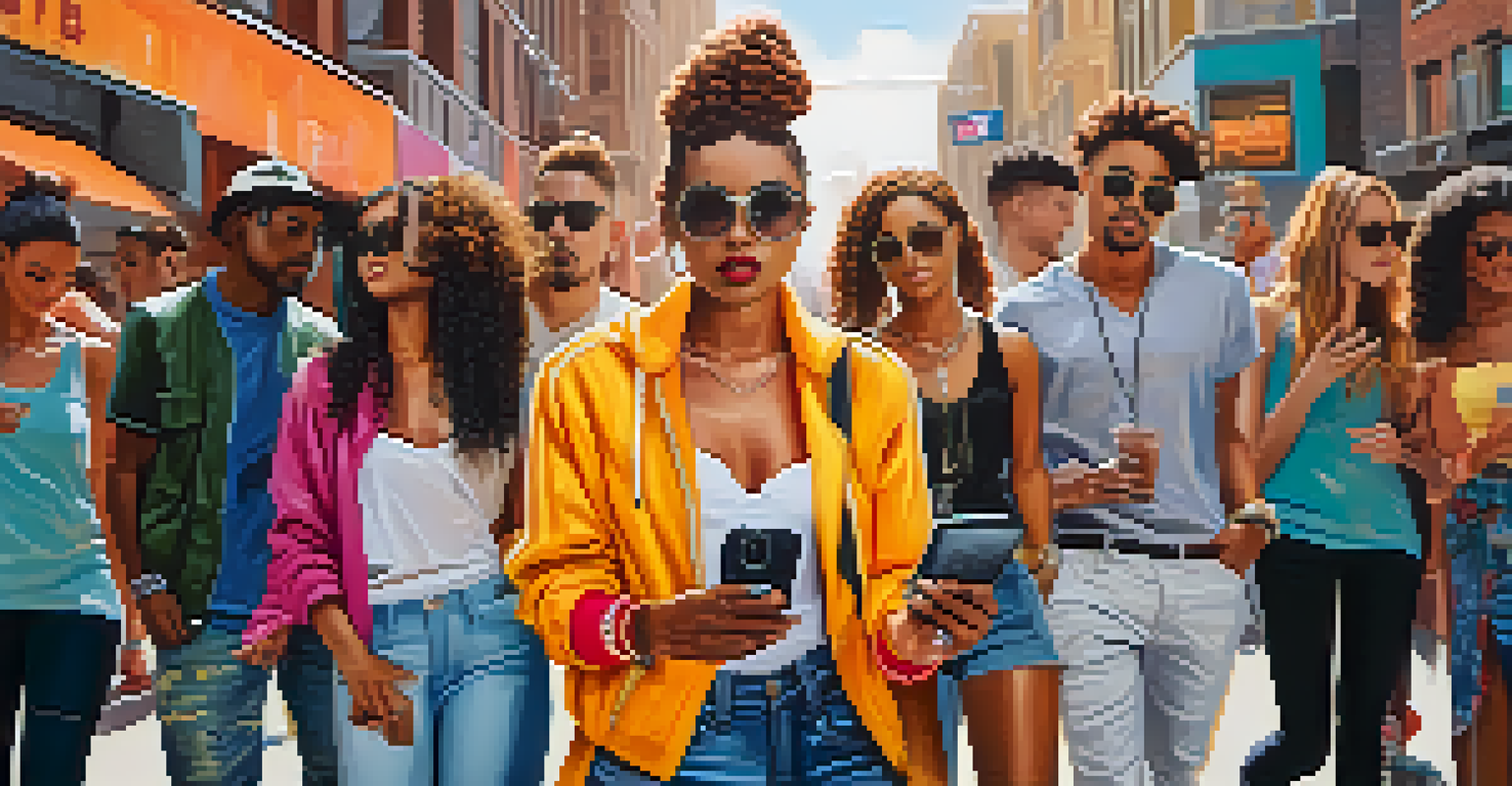Fashion Shows: A Platform for Body Positivity and Inclusivity

The Evolution of Fashion Shows Towards Inclusivity
Fashion shows have historically catered to a narrow ideal of beauty, often showcasing only a specific body type. However, over the years, we’ve seen a significant shift towards inclusivity, reflecting the diversity of real-world bodies. Designers and brands are increasingly recognizing that beauty comes in all shapes and sizes, which is a crucial step in challenging outdated norms.
Fashion is about dreaming and making other people dream.
This evolution is not just a trend; it represents a broader societal change towards acceptance and representation. More brands are embracing models of various sizes, ages, and ethnicities, allowing audiences to see themselves reflected on the runway. This shift fosters a sense of belonging and empowers individuals who may have felt marginalized by traditional beauty standards.
For instance, events like New York Fashion Week have showcased plus-size models and adaptive fashion, highlighting the importance of representation. Such changes in the fashion industry can inspire confidence and encourage body positivity, proving that fashion is for everyone, regardless of their physical appearance.
Body Positivity: A Movement Gaining Momentum
The body positivity movement has gained significant traction, thanks in part to social media, where individuals share their stories and celebrate their bodies. Fashion shows have become a powerful platform for this movement, allowing models to strut their stuff while promoting self-love and acceptance. By featuring diverse body types, fashion shows help challenge the traditional narratives surrounding beauty.

The impact of body positivity extends beyond the runway. It encourages brands to rethink their marketing strategies and product offerings, pushing for more inclusive sizing and styles. This shift not only benefits consumers but also fosters a more positive and supportive community within the fashion industry.
Fashion Shows Embrace Inclusivity
The fashion industry is shifting towards representing diverse body types, ages, and ethnicities, reflecting the beauty of real-world bodies.
Moreover, when models confidently showcase their bodies, it sends a powerful message that everyone deserves to feel beautiful and worthy. This growing acceptance is vital in combating unrealistic beauty standards and promoting healthier body images in society.
Diversity in Model Representation: A Step Forward
Diversity in model representation is crucial for creating a more inclusive fashion industry. Fashion shows are beginning to reflect this change by showcasing models from various racial, ethnic, and cultural backgrounds. A diverse runway not only celebrates different identities but also opens up conversations around cultural appreciation versus appropriation.
Inclusion is not a matter of political correctness. It is the key to growth.
Brands that prioritize diversity in their casting decisions contribute to a richer and more vibrant fashion narrative. For example, when models of different backgrounds share the runway, they bring unique stories and perspectives that resonate with a broader audience. This representation helps dismantle stereotypes and encourages acceptance across communities.
By embracing diversity, fashion shows can inspire younger generations to appreciate their own uniqueness. This inclusivity fosters a sense of pride and belonging, which is essential in a world that often focuses on differences rather than similarities.
The Role of Social Media in Shaping Fashion Narratives
Social media plays a pivotal role in reshaping how we view fashion and body image. Platforms like Instagram and TikTok have democratized fashion, allowing anyone to share their style and connect with others. This shift has empowered individuals to challenge traditional beauty standards and advocate for inclusivity in fashion shows.
Through hashtags and viral campaigns, voices advocating for body positivity and diversity can reach wider audiences. Social media influencers, especially those representing diverse body types, have become powerful advocates for change, helping to shift consumer expectations and demand more inclusive practices.
Body Positivity Gains Traction
The body positivity movement is empowering individuals to embrace their uniqueness, challenging traditional beauty standards through diverse representation.
The interaction between fashion shows and social media creates a feedback loop where audiences can express their opinions and influence future runway presentations. This dynamic relationship nurtures a community that values authenticity and encourages brands to listen and adapt to the needs of their consumers.
Fashion Brands Leading the Charge for Inclusivity
Many fashion brands are taking significant strides to promote inclusivity and body positivity through their runway shows. Brands such as Savage X Fenty and Aerie have made headlines for their commitment to showcasing diverse models and celebrating all body types. Their pioneering efforts inspire others in the industry to follow suit, paving the way for a more inclusive fashion landscape.
These brands not only feature models of different sizes but also create clothing that caters to a wide range of body shapes. By doing so, they demonstrate that fashion can be both stylish and accessible, challenging the notion that certain looks are only meant for specific body types. This approach encourages consumers to embrace their individuality and feel confident in their fashion choices.
Moreover, when established brands embrace diversity, they set a precedent for emerging designers and smaller labels. This ripple effect can lead to a more inclusive industry overall, where every body is celebrated and represented on the runway.
The Impact of Inclusivity on Consumer Behavior
The push for inclusivity in fashion shows has a profound impact on consumer behavior. When brands showcase diverse body types and promote body positivity, they foster a deeper emotional connection with their audience. Consumers are more likely to support brands that reflect their values and ideals, leading to increased loyalty and engagement.
Additionally, representation in fashion can influence purchasing decisions. When individuals see models who look like them, they’re more inclined to envision themselves in those clothes. This shift not only boosts sales but also encourages a more positive shopping experience.
Social Media Fuels Fashion Change
Platforms like Instagram and TikTok are democratizing fashion, enabling advocates for inclusivity and body positivity to influence consumer expectations and industry practices.
As consumers become more aware of the importance of inclusivity, they begin to prioritize brands that align with their beliefs. This change in mindset challenges brands to step up and adapt, creating a more inclusive marketplace where everyone feels welcome.
Future Trends: The Continued Journey Towards Inclusivity
Looking ahead, the journey towards inclusivity in fashion shows is far from over. While significant progress has been made, there’s still work to be done to ensure that all bodies and identities are represented. Future trends suggest that the industry will continue to evolve, with a focus on sustainability and ethical practices alongside inclusivity.
As consumers increasingly demand transparency and authenticity from brands, it will be essential for designers to incorporate diverse perspectives into their collections. This not only includes body types but also cultural backgrounds and personal stories, enriching the fashion narrative.

Ultimately, the future of fashion shows promises to be more inclusive and representative, offering a platform for all voices to be heard. By continuing to advocate for body positivity and diversity, the fashion industry can create a more supportive environment that celebrates the beauty of individuality.